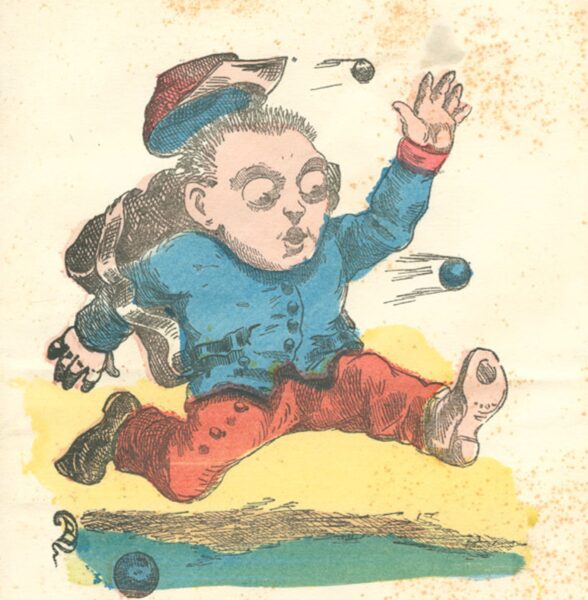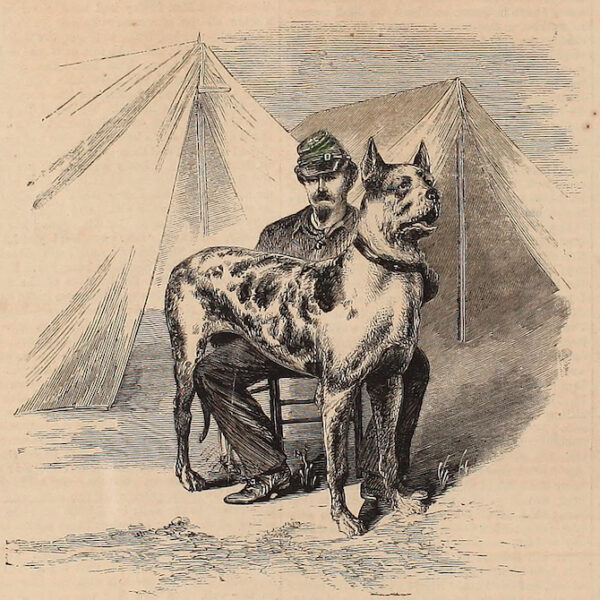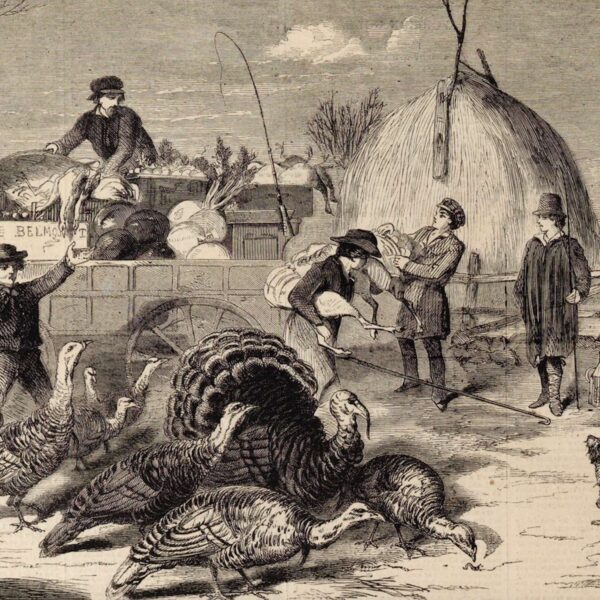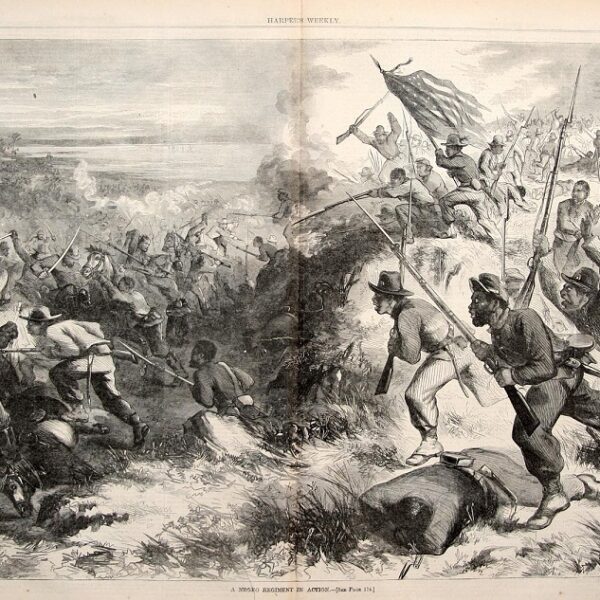At the Philadelphia Centennial Exhibit of 1876, Edwin Forbes, renowned for his work during the Civil War as a “special artist” for Frank Leslie’s Illustrated Newspaper, displayed a collection of copper etchings based on his wartime illustrations of the Army of the Potomac. Forbes had spent the immediate postwar years completing the drawings and transferring them to copper plates. The resulting series, which Forbes titled “Life Studies of the Great Army,” was received enthusiastically, especially by veterans of the conflict. As former Union general William W. Averell remarked, “Any soldier living who was familiar with those scenes will at a glance appreciate the fidelity of these pictures…. As a contribution to the graphic history of our late war, they are simply invaluable.”
Samples from “Life Studies,” accompanied by Forbes’ original descriptions, are below. For more, see the article “Sketches of War” in the Spring 2012 (Vol. 2, No. 1) issue of The Civil War Monitor.
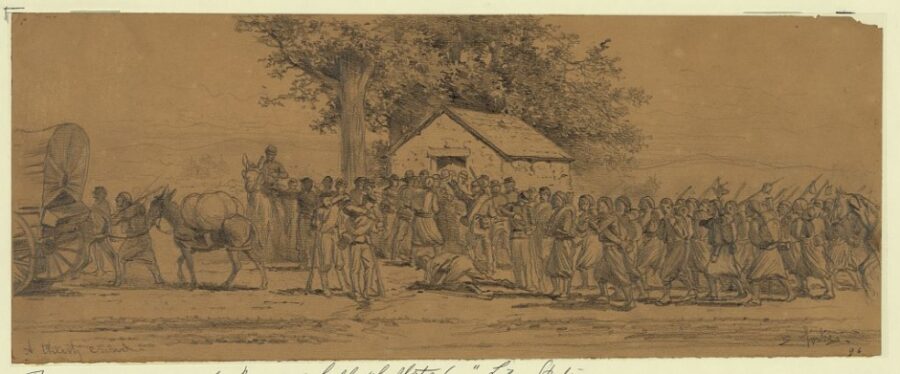
A thirsty crowd at the old spring house. A scene on the line of march during a hot day. (Source for this and all subsequent images: Library of Congress.)
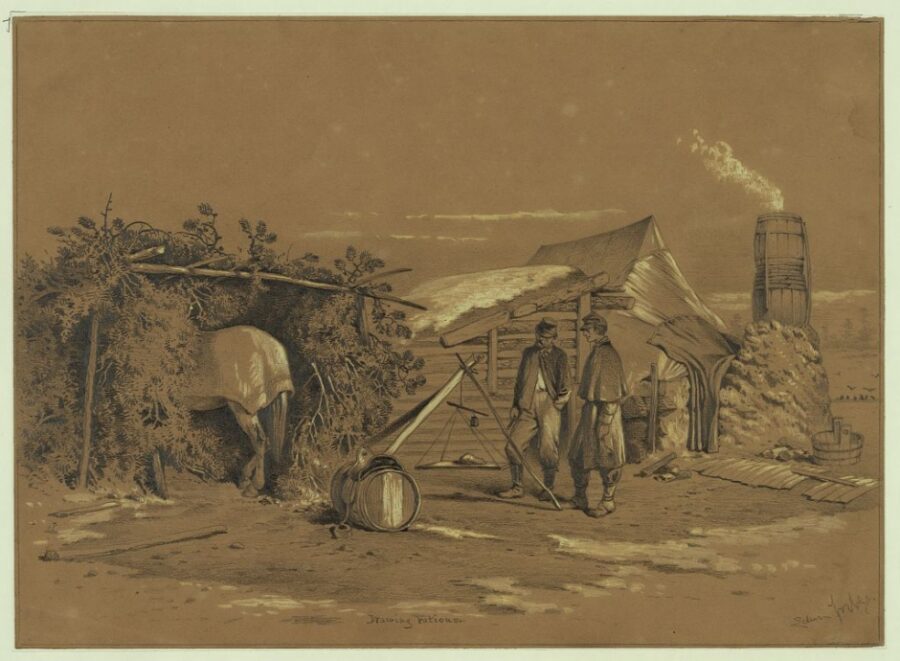
The commissary’s quarters in winter camp. The commissary sergeant is seen in the foreground weighing out rations of meat for the company cook. The structure on the left is an improvised stable built of pine boughs.
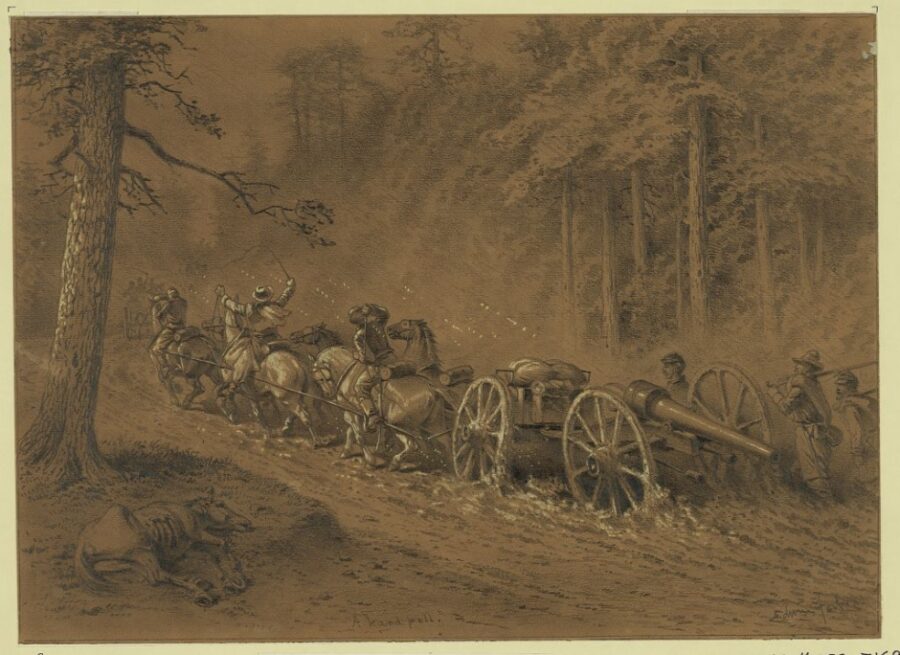
Through the Wilderness. A battery of artillery dragged through the mud during a spring rain-storm.
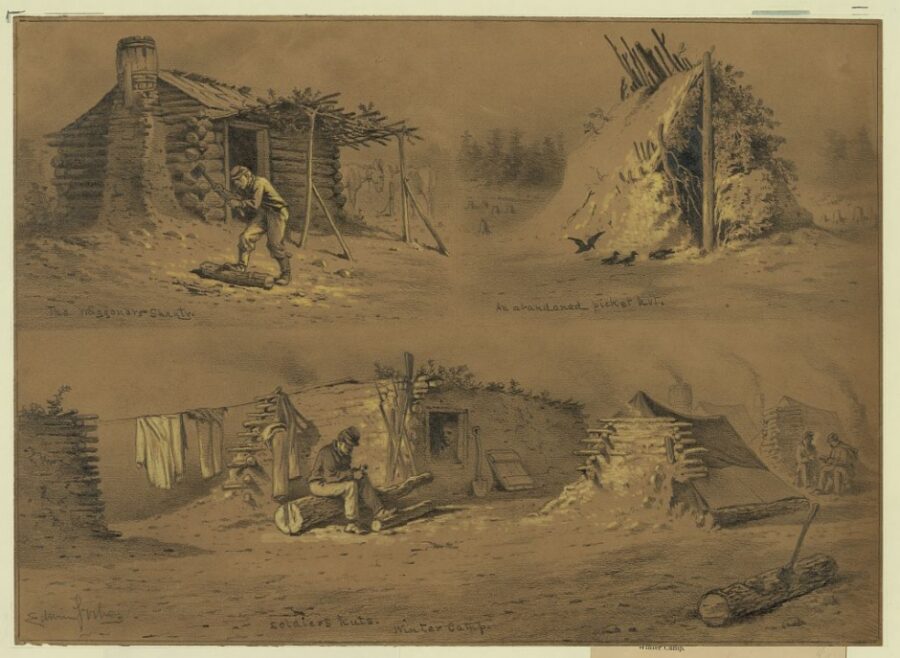
A wagoner’s shanty. Winter camp. The deserted picket-hut. Mud huts.
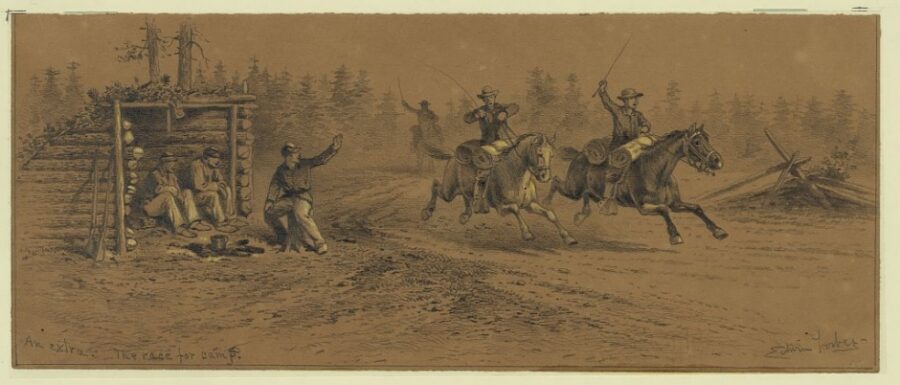
A race for camp. Newsboys passing the picket station while on the road to camp with the latest news.
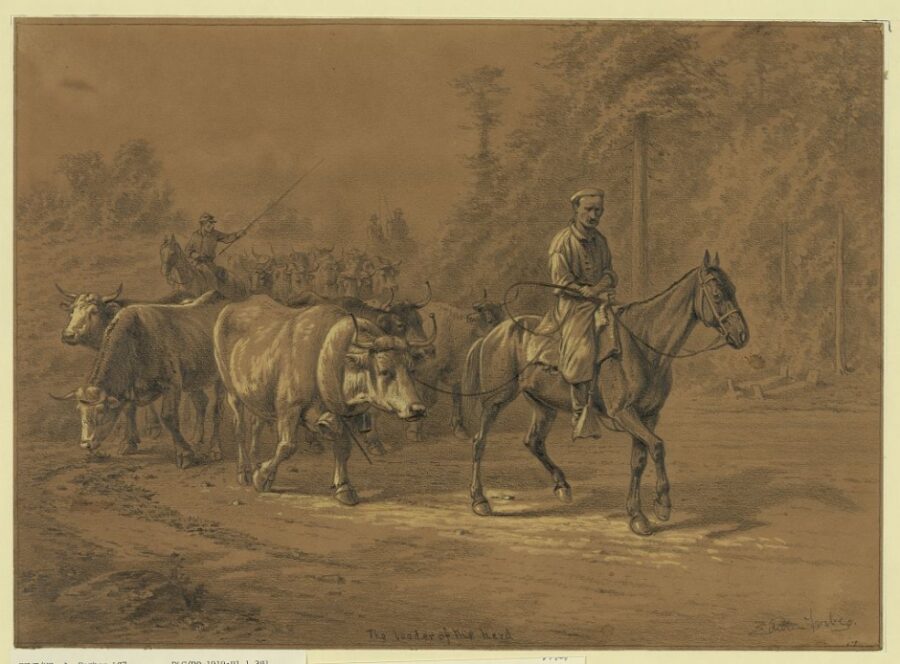
The leader of the herd. Cattle for army use led by a Zouave butcher. Across the road, under the pine trees, can be seen the graves of two Union soldiers, who have been killed in a roadside skirmish.
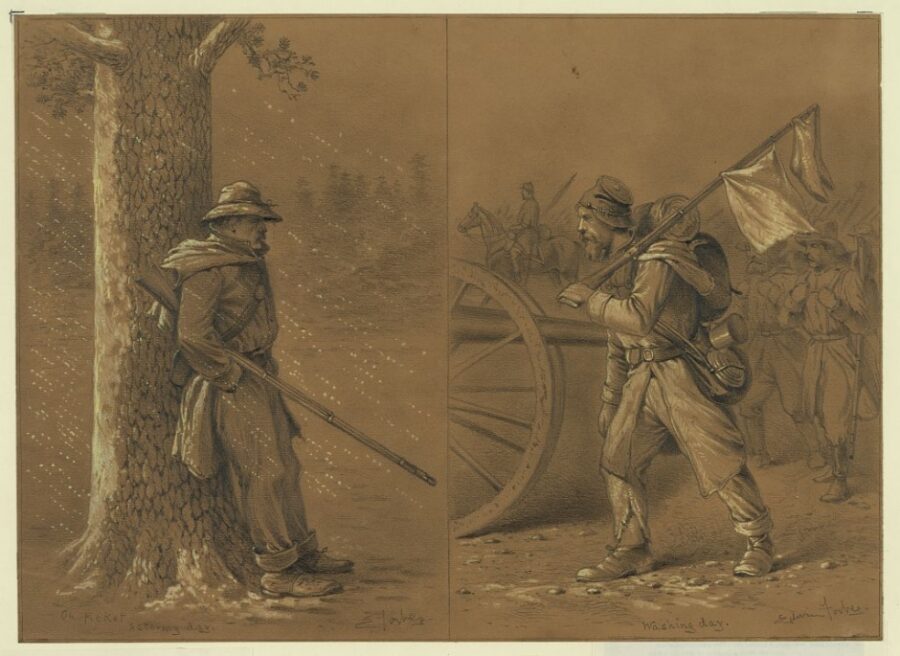
A rainy day on picket. An infantryman sheltered behind a pine tree with his rifle under his arm to protect it from the rain. Washing day. A soldier with his latest wash hung out to dry on the barrel of his rifle. In the distance the column is seen on the march.
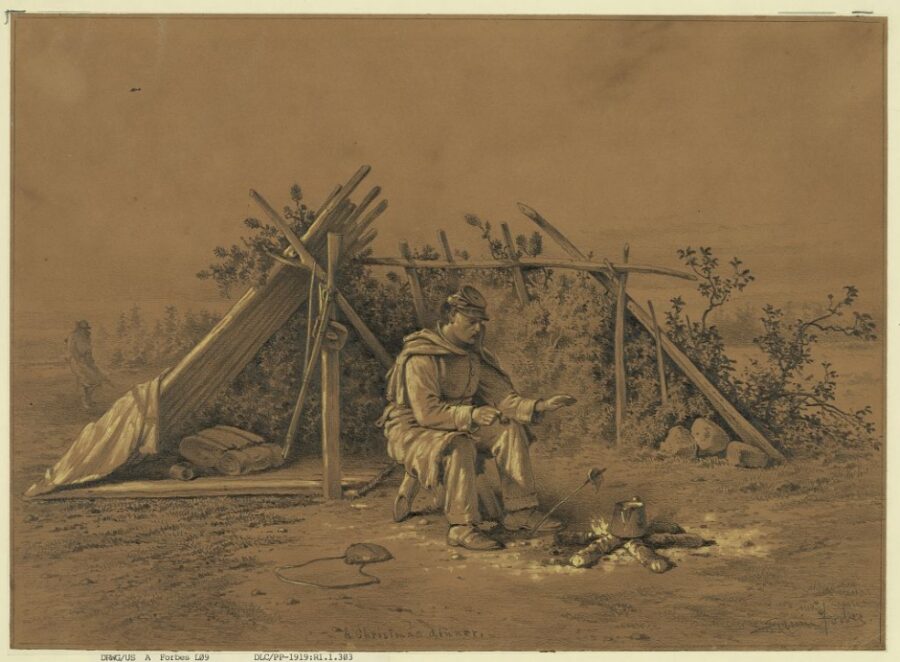
A Christmas dinner. A scene on the outer picket line. A soldier off duty is cooking his frugal meal in front of an improvised shelter made of pine boughs and fence rails.
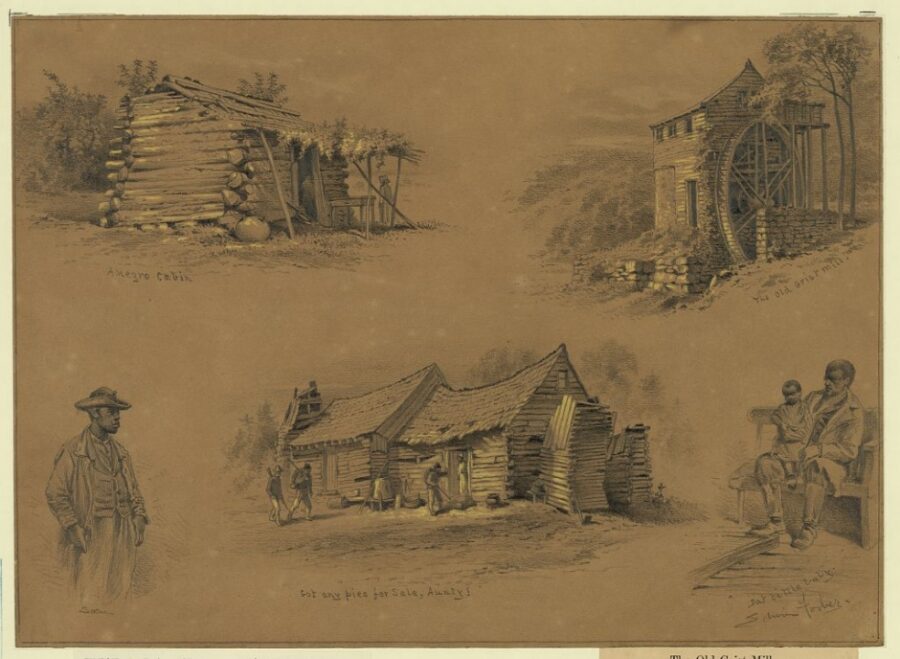
A slave cabin. The old grist mill. “Got any pies for sale, aunty?”
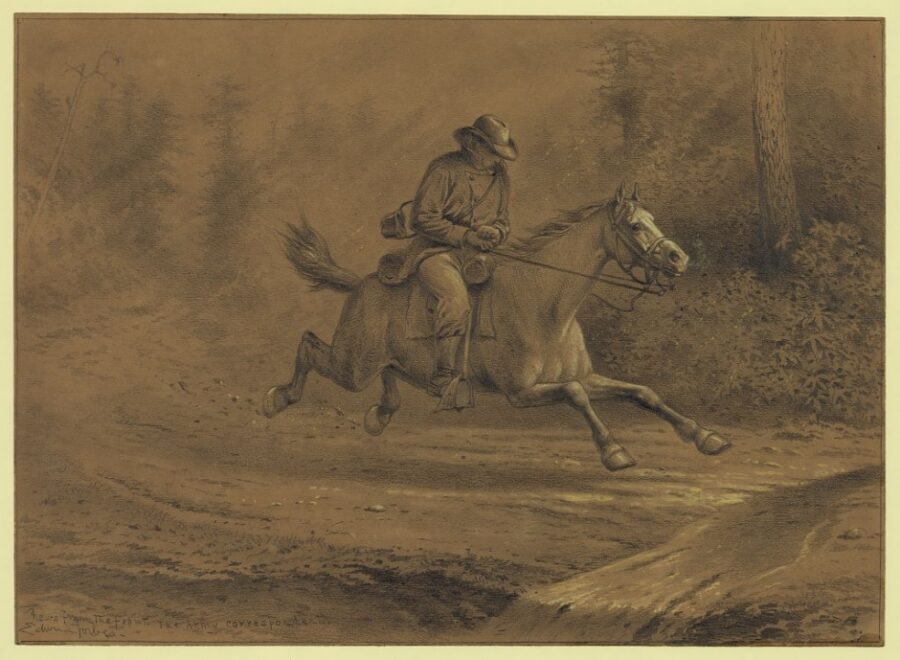
The newspaper correspondent. Riding to send off his dispatches with news of a battle, ahead of rival correspondents.
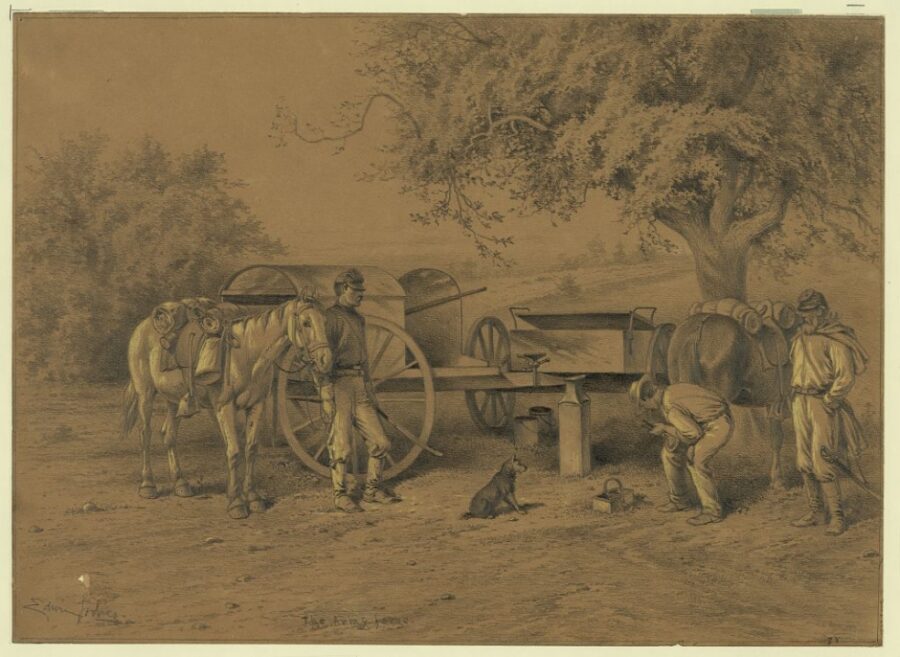
A scene on the roadside near summer camp. Two cavalrymen, who have just returned from a scout, are having their horses shod.
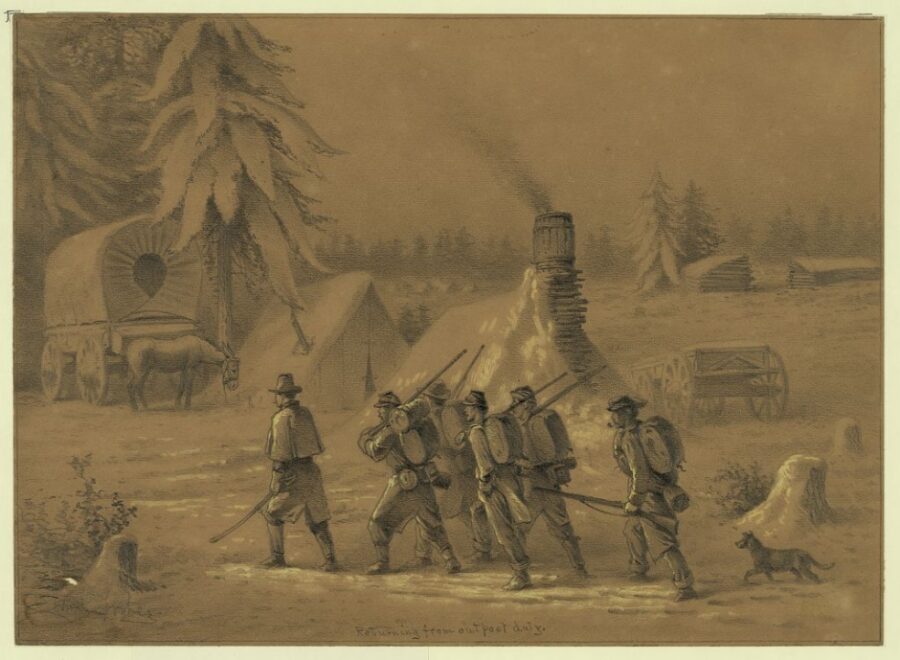
Returning from outpost duty. A scene in winter camp. A squad of troops have just returned from the picket line and are seeking their quarters.
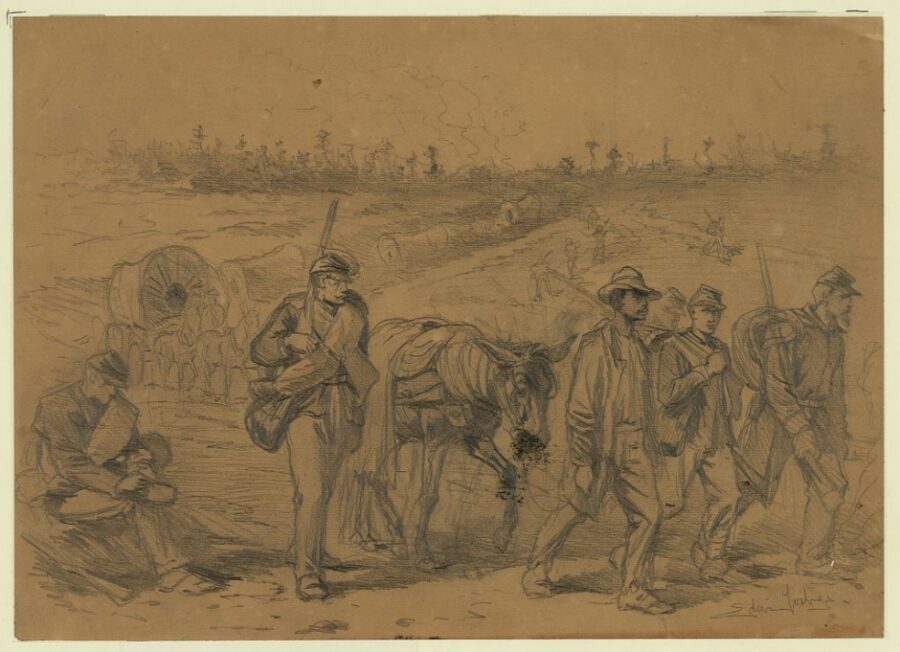
The rear of the column. Stragglers and wagon guards are bringing up the rear, while the wagon train is seen coming down the distant hill, with flankers thrown out to protect it from the enemy’s horsemen.
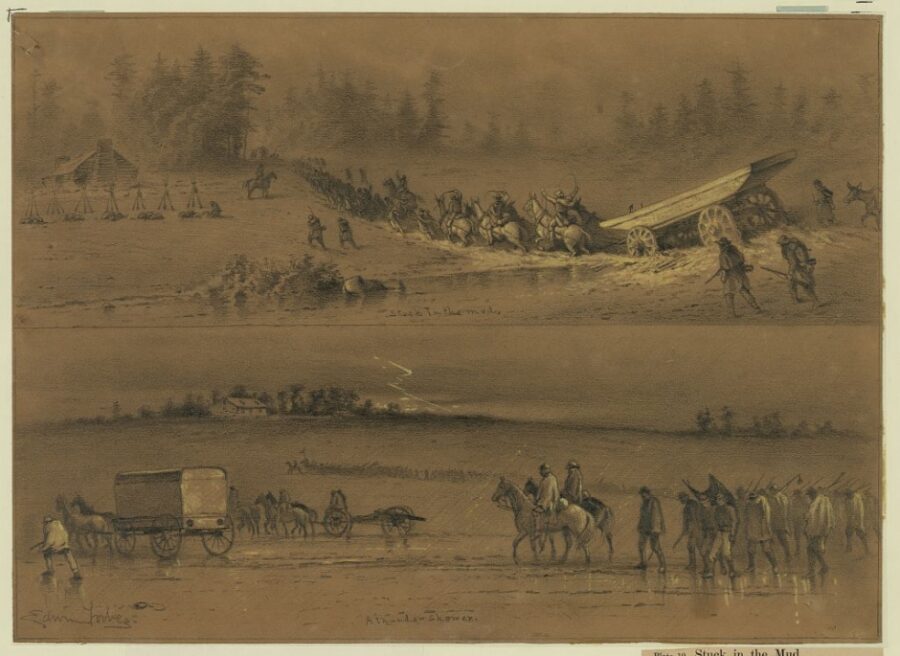
Stuck in the mud. A pontoon wagon with boat fast in a slough. A regiment of infantry is pulling on a rope attached to the head of the team, trying to drag them to firmer ground. A flank march across country during a thunder-shower.
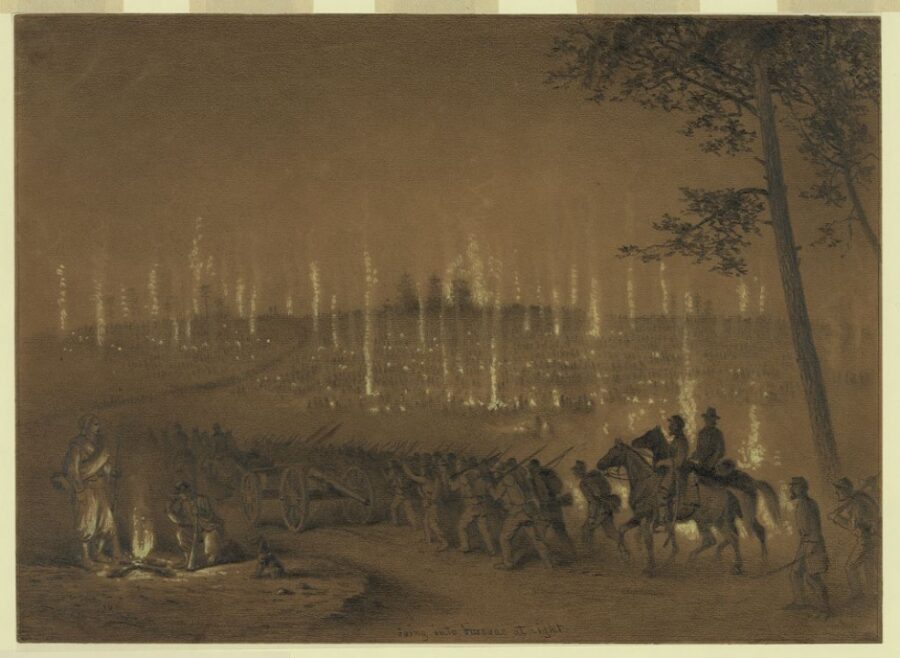
Going into camp at night. The fields on all sides are covered with troops who are engaged in cooking supper, the column in the road marching on and disappearing over the hill in the distance.
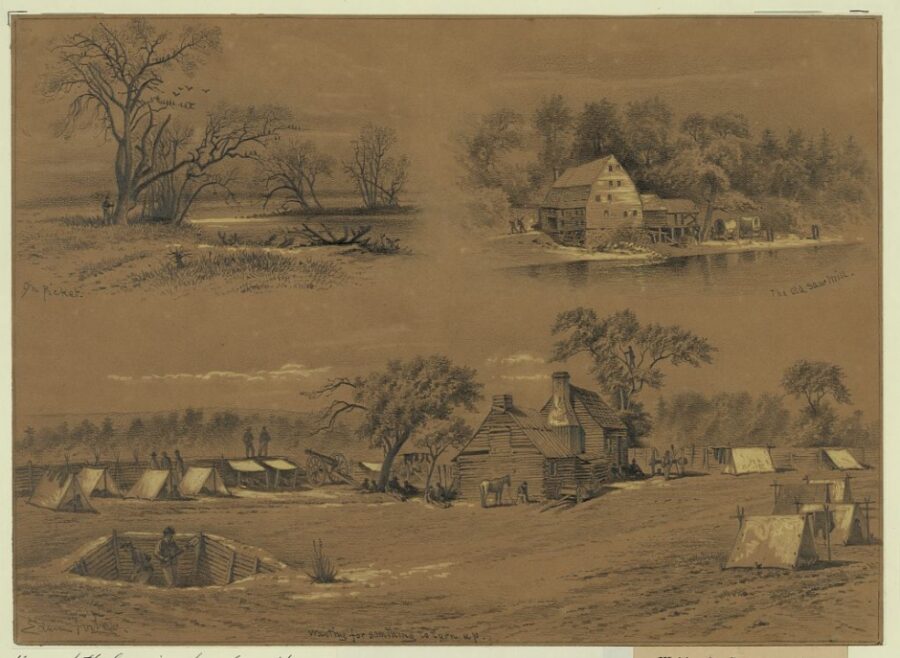
On picket at the river bank. An old saw-mill. Waiting for something to turn up. A scene behind the breastworks during a lull in the battle. The troops defending this position of the line are sleeping under their shelter-tents or lounging under the shade of the trees and house. In a tree, beyond the house, a lookout is posted to give warning of the advance of the enemy.
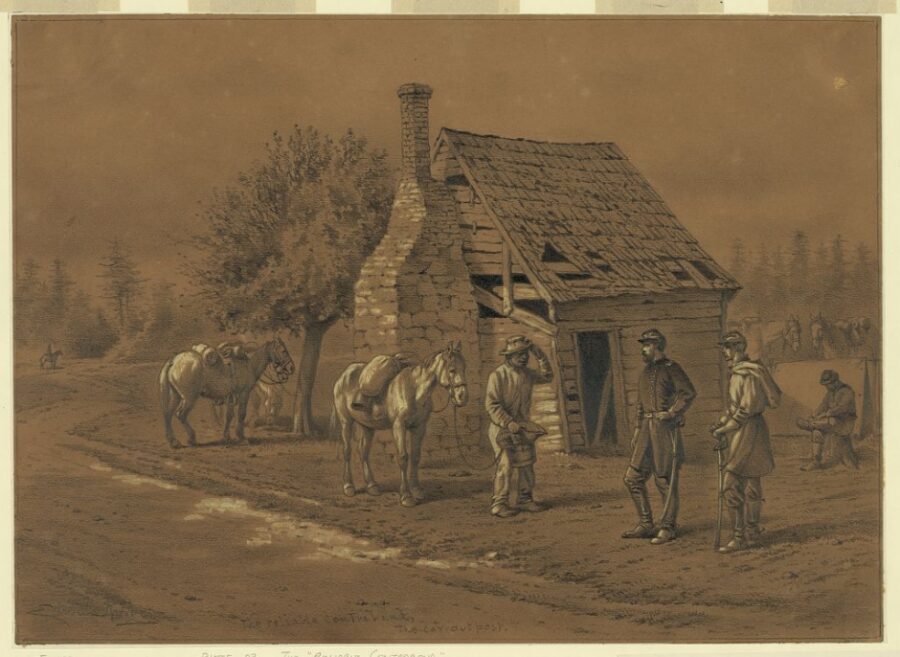
The “reliable contraband.” A scene at the cavalry outpost. In the foreground a negro, “leading an old horse,” is seen hesitatingly imparting to anxious officers what little information he possesses of the enemy’s movements. Cavalrymen and their horses are grouped about the house in the middle ground, and in the distance a vidette is sitting on his horse watching the road through the woods, in anticipation of the approach of the enemy.
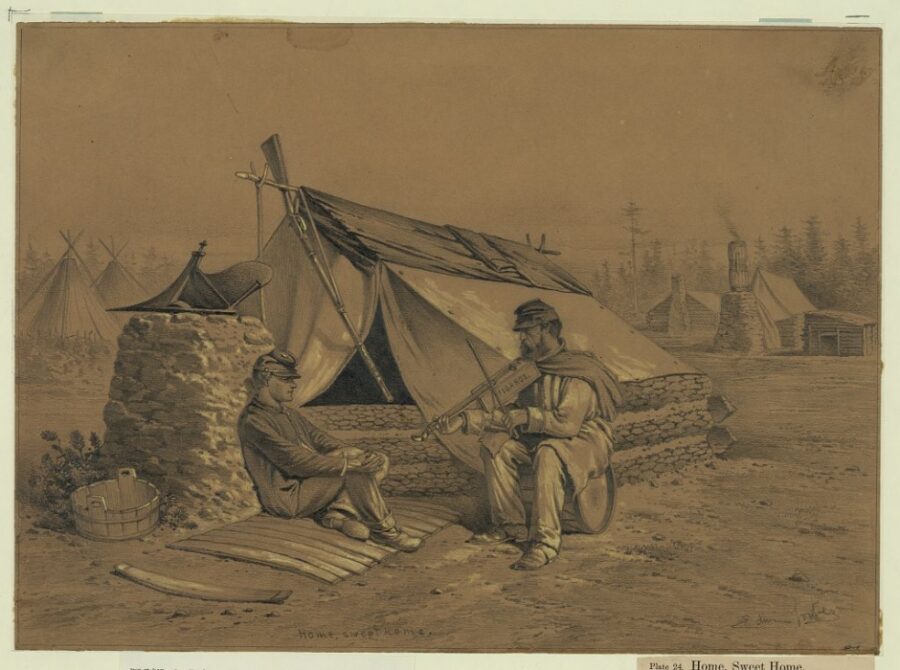
Home, sweet home. A scene in winter camp. Two soldiers sitting in front of their quarters, which are built with logs plastered with clay, and covered with canvas. The soldier sitting on the drum is playing the old tune on an improvised fiddle made from a cigar box, while the younger sits leaning against the mud chimney, which is crowned with a ploughshare to keep the smoke from blowing into the tent.
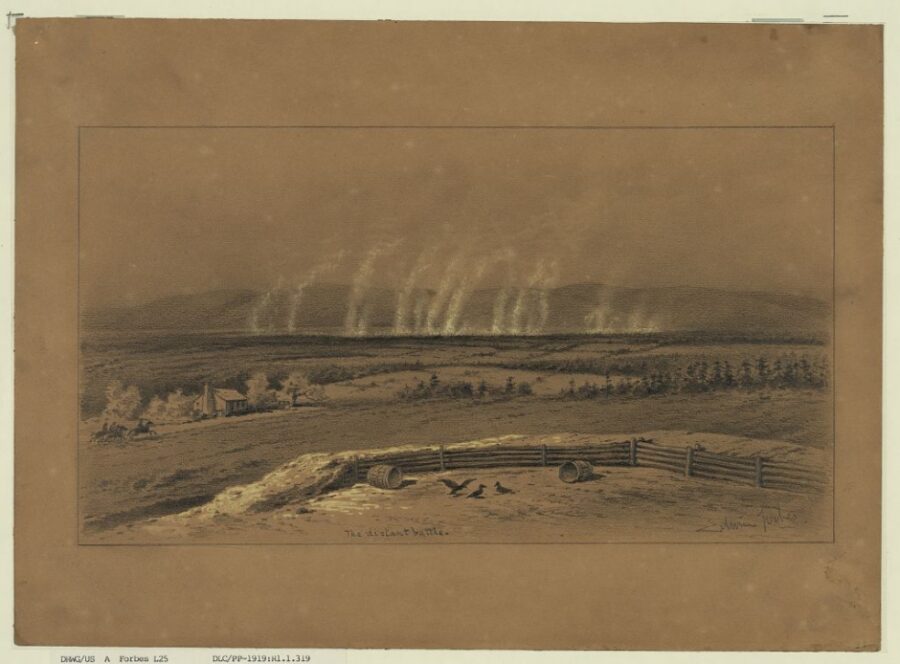
A distant battle. Seen at a distance of about 6 miles. In the foreground is an abandoned breastwork, and on the road to the left a column of troops is seen hurrying toward the sound of distant cannon.
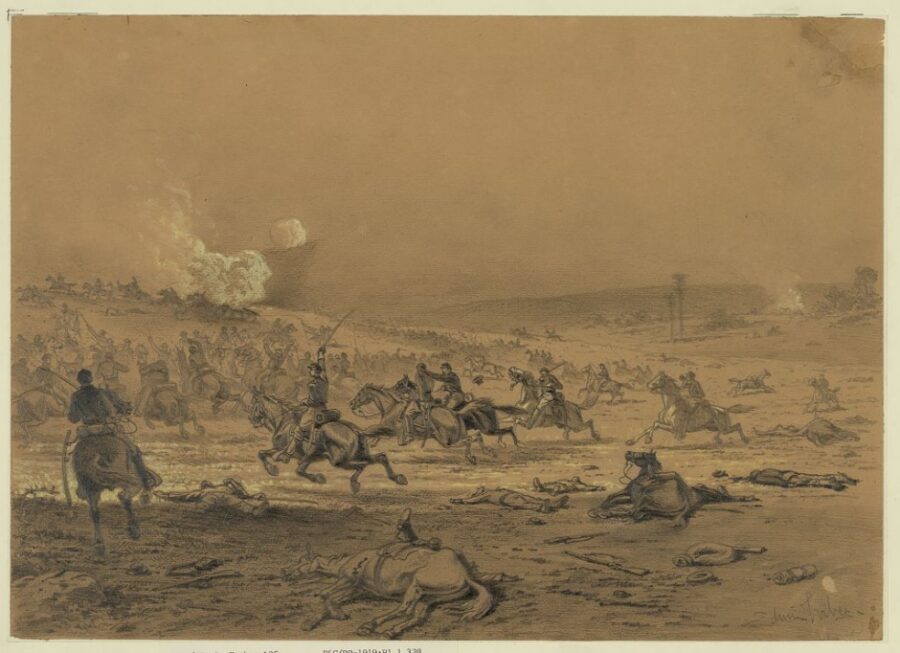
A cavalry charge. An advance against the enemy’s guns, which were posted on the hill. The enemy’s line has met the charge, and is trying to save the guns, which are hurrying to the rear.
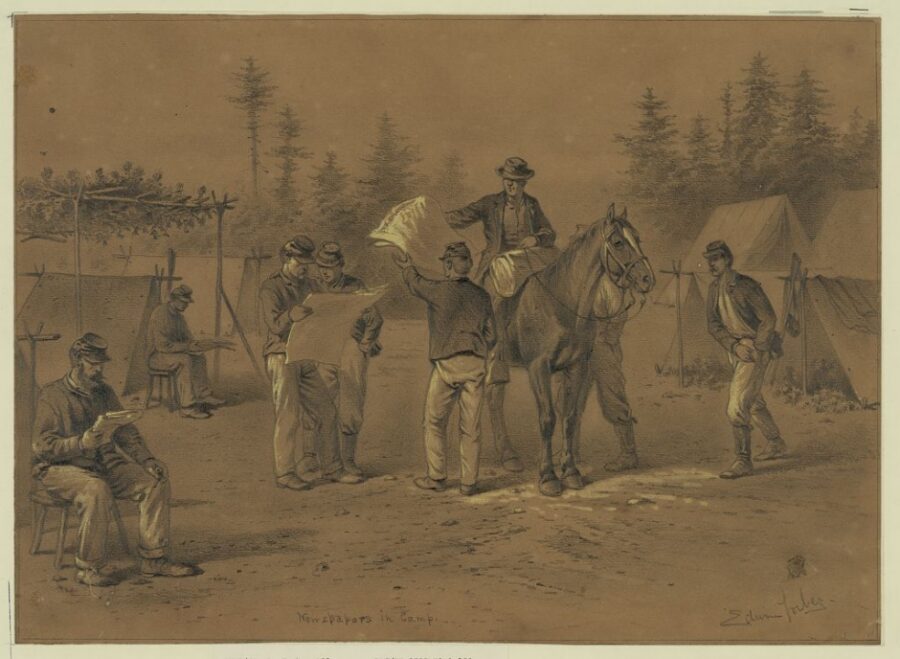
Newspapers in camp. The newsman is sitting on horseback, surrounded by men who are buying and reading the latest “news from the front,” as it comes from the rear.
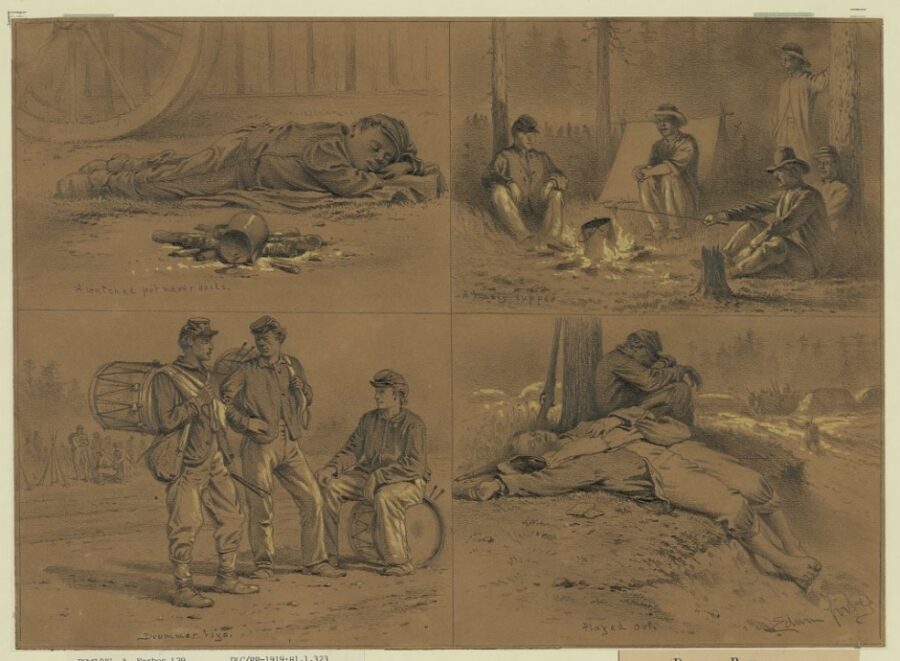
A watched pot never boils. The captain’s cook. A hearty supper on the battle-field. Drummer boys. Played out. Two footsore and used-up soldiers have dropped out of the column and fallen asleep at the foot of a tree, while the rear of the detachment is seen disappearing up the road.
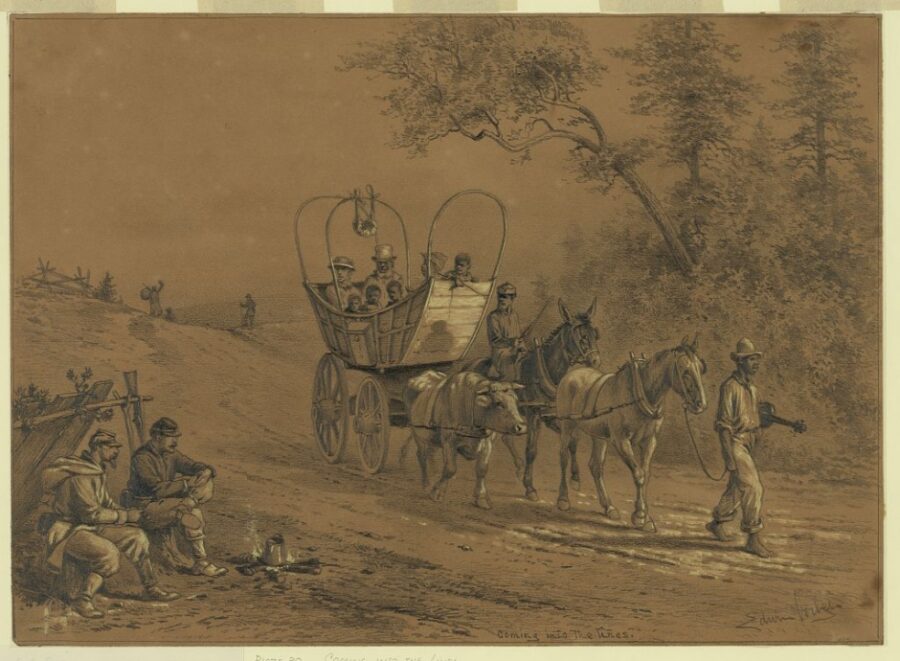
Coming into the lines. A party of slaves have taken massa’s old schooner (wagon) and, with a “spike” team, have started for the Union lines. They are passing the picket post. On the distant hill some laggards appear in sight, one waving his hat for joy as he catches sight of “Massa Linkum’s sodgers.”
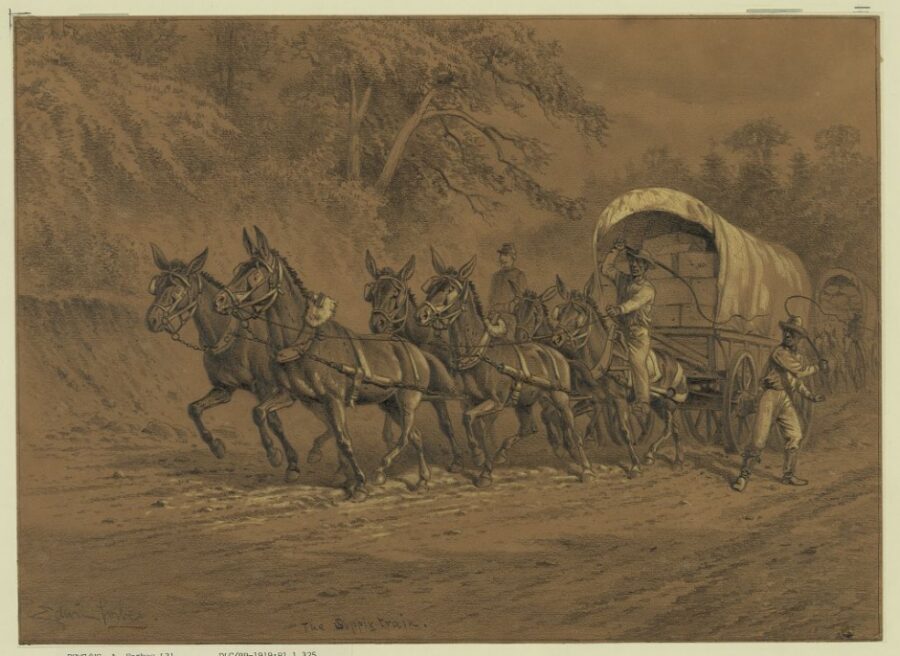
The supply train. “Hard tack and salt horse” for the army.
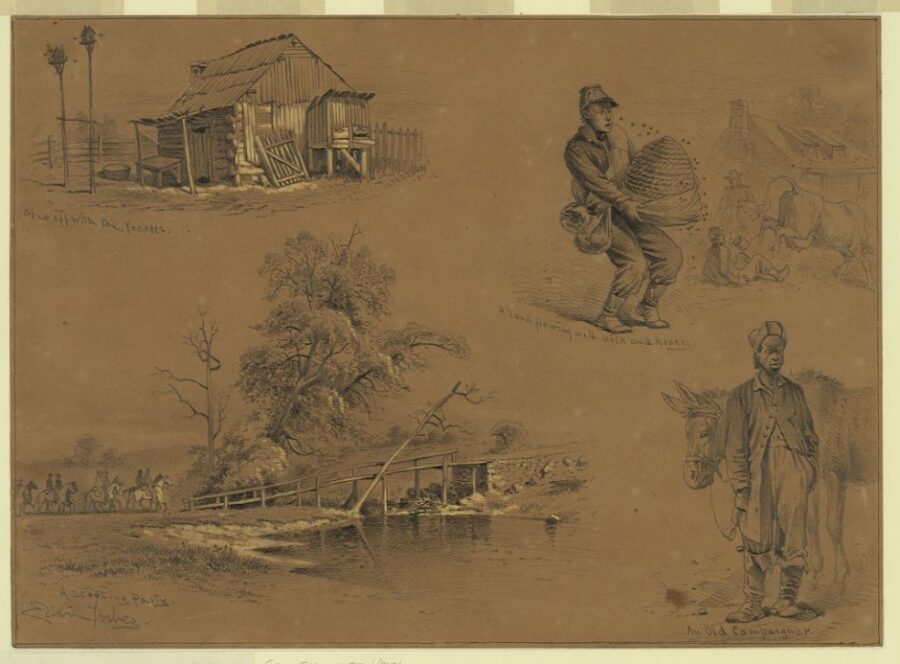
“Gone off with the Yanks.” A deserted negro cabin. A land flowing with mild and honey. A scouting party. An old campaigner. A negro cook with the mess mule.
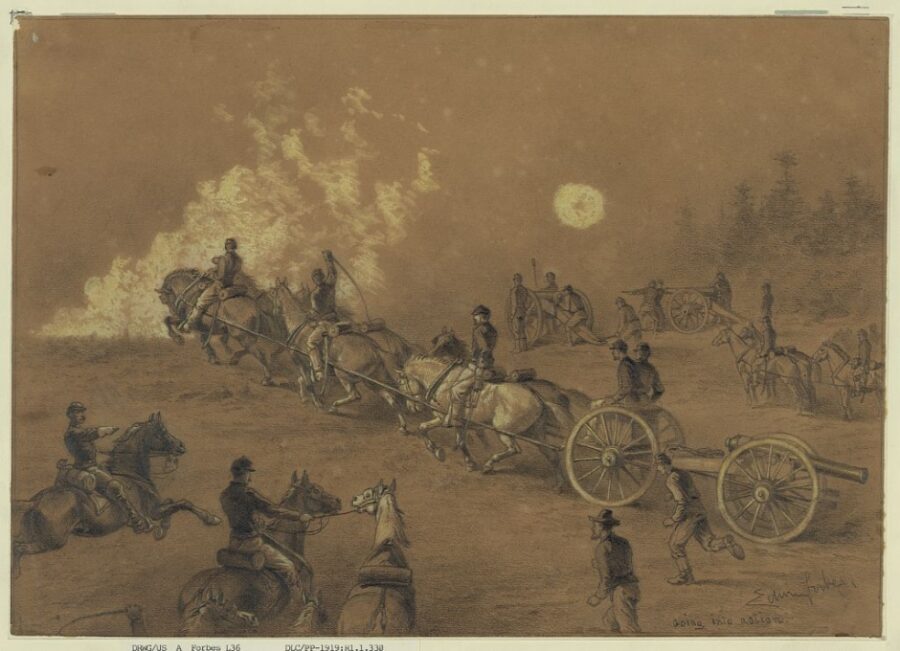
Going into action. A battery of artillery, under the enemy’s fire, dashing up the hill and taking position.
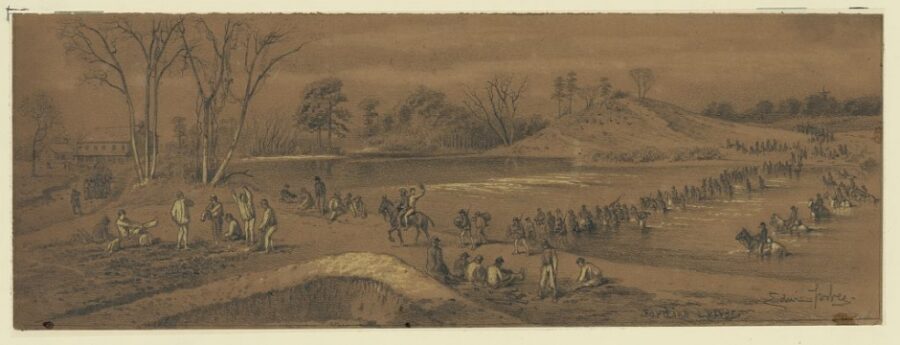
Fording a river. Infantry are wading the stream at the ford, with a line of cavalry posted below to catch any unlucky soldier who may be carried away by the force of the current.
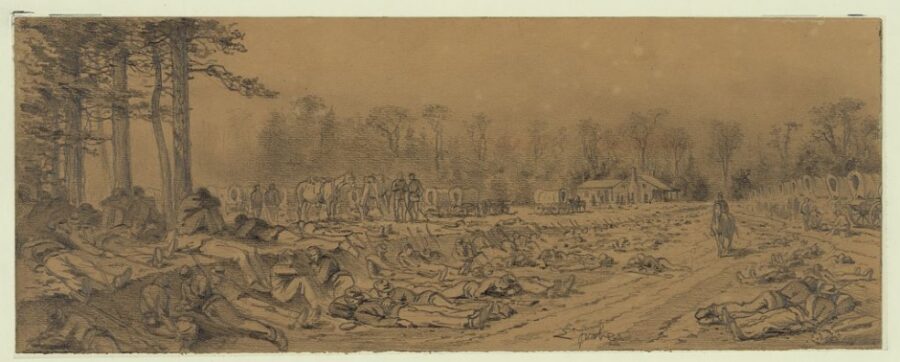
Twenty minutes’ halt. A column of troops, while on the march, have been halted for rest, and are lying about under the trees and in the road.
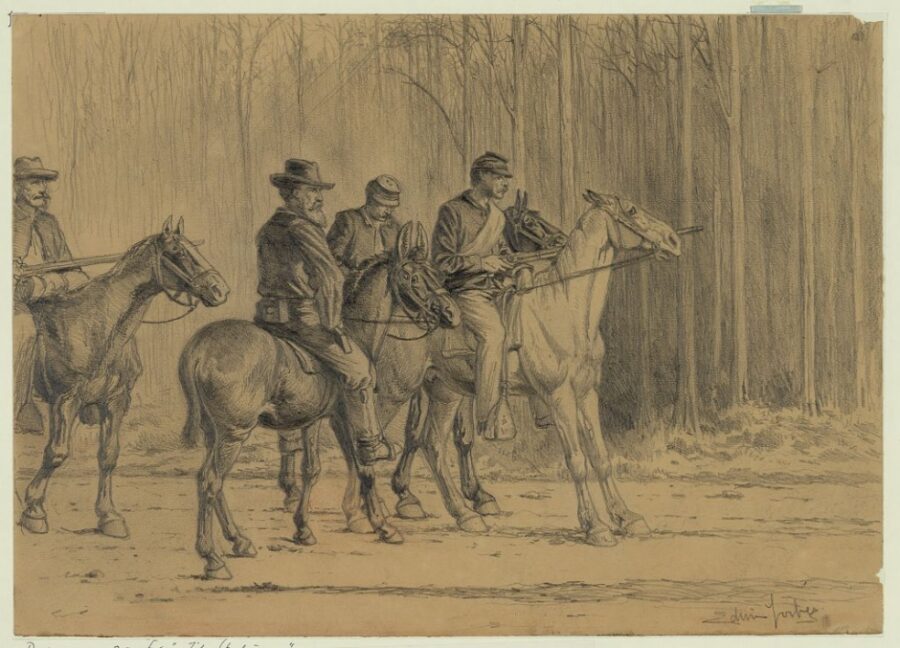
“Bummers.” A group of bummers on horse and mule back, huddled in the road, anxiously watching a body of men who have just appeared at a turn in the road.
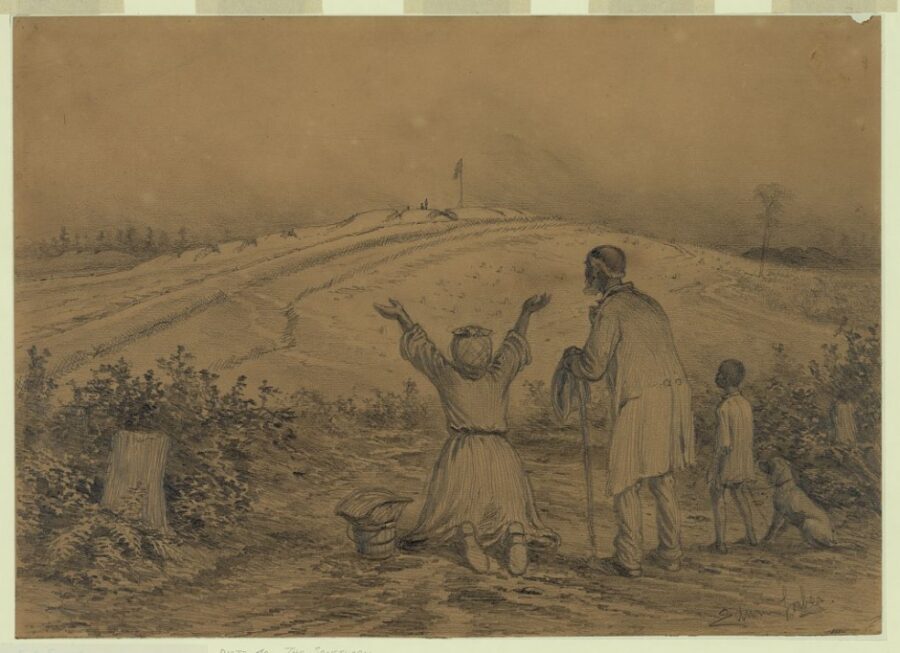
The sanctuary. A negro family has just come in sight of the fortified lines of the Union Army. The old mother has thrown herself on her knees, praising the Lord, while the rest of the family are grouped behind, contemplating the scene in silent wonder.

